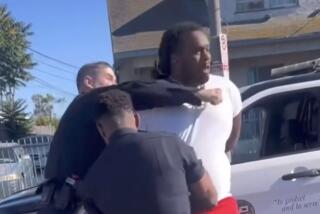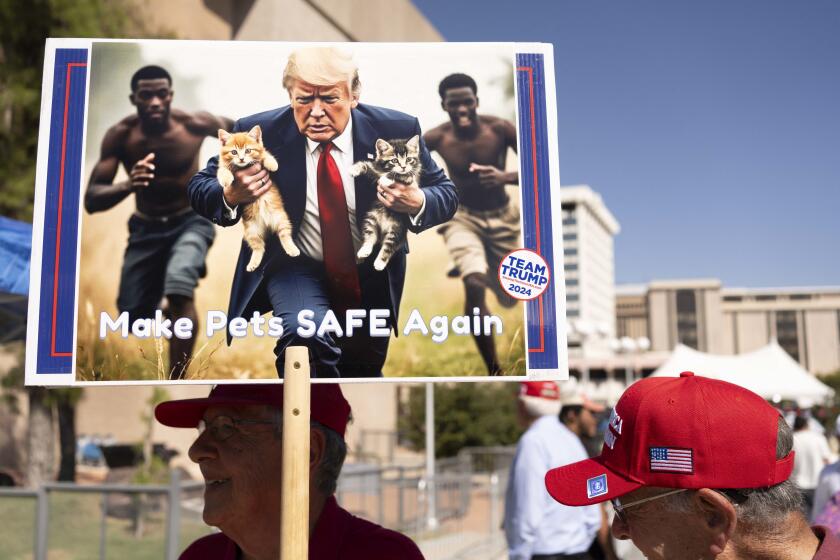Editorial: A cautious step forward on police drones
Among the arguments against the use of airborne camera-wielding drones by the Los Angeles Police Department, a statement made by one critic at a recent Police Commission meeting stood out: “Drones should not be talked about.”
That’s the most extreme position, boiled down to its essence: that law enforcement drones (or “small unmanned aerial systems,” as police prefer to call them) pose such a serious threat of police surveillance and militarization that the subject should not even be broached.
But of course it’s far too late for that. Technology steadily advances, and inexpensive drones will become more common, whether they are controlled by police, commercial ventures or criminals. Drones must be talked about, often and in depth.
The LAPD’s proposed drone guidelines are a good start but leave many open questions.
The LAPD’s openness to such talk has been mixed. To its credit, in response to public outcry it grounded and eventually destroyed the two drones it accepted in 2014 as gifts from Seattle and began a process of public outreach and input. But many participants in the LAPD’s recent community meetings left with the impression that police were less interested responding to public concerns about drones than they were in checking off the outreach boxes before moving ahead with their program.
Now the Police Commission — the LAPD’s civilian overseers — has before it a set of proposed guidelines for deploying drones that provides for important measures of transparency, accountability and oversight. During a yearlong pilot project, drones would be deployed only in limited circumstances, with a chain of required approvals that goes up to a deputy chief. Drones would include cameras but not weapons, the point being to extend the vision of police without extending their physical reach.
Each use would have to be logged and reported after the fact to Chief Charlie Beck. The commission and the public would also have to receive periodic reports on drone activity.
Drones could not be used for stakeouts or general surveillance, but only during critical incidents, such as when suspects are barricaded or holding hostages, or to search for missing people in wilderness areas, giving officers a view they could not otherwise get without putting themselves in extreme danger.
The proposed guidelines are a good start but leave many open questions. As a device flies over a neighborhood in search of a missing person, for example, what becomes of the images it captures on the way, as it moves over backyards or past apartment windows? Would those recordings be available to the public? Would gathered images be subjected to facial recognition software or studied for evidence of criminal activity? Would video be subject to more disclosure, or less, than video collected by officer body cams or patrol car dash cams? It is hard to be enthusiastic about a drone program in the absence, as yet, of a revised policy on release of body-cam video that reflects the input and lessons learned from the recent public outreach project on that issue.
Members of the Stop LAPD Spying Coalition argue that “mission creep” is inevitable — that once allowed to use drones for rescues and perimeter searches, police will find an excuse to use the devices to snoop or serve warrants. As for drones becoming weapons, police helicopters were never supposed to be weaponized either, yet earlier this year an officer shot a suspect from a helicopter. Last year, police in Dallas used a non-flying, explosive-carrying drone to stop a suspected sniper.
These are good arguments for strict and consistent oversight, but not for keeping a potentially valuable and even life-saving tool, if used responsibly, out of police hands altogether and for all time. The commission ought to move forward with a yearlong pilot project and use it as an opportunity to allow the public to see more clearly what its Police Department does, rather than the other way around.
Follow the Opinion section on Twitter @latimesopinion and Facebook
More to Read
A cure for the common opinion
Get thought-provoking perspectives with our weekly newsletter.
You may occasionally receive promotional content from the Los Angeles Times.










